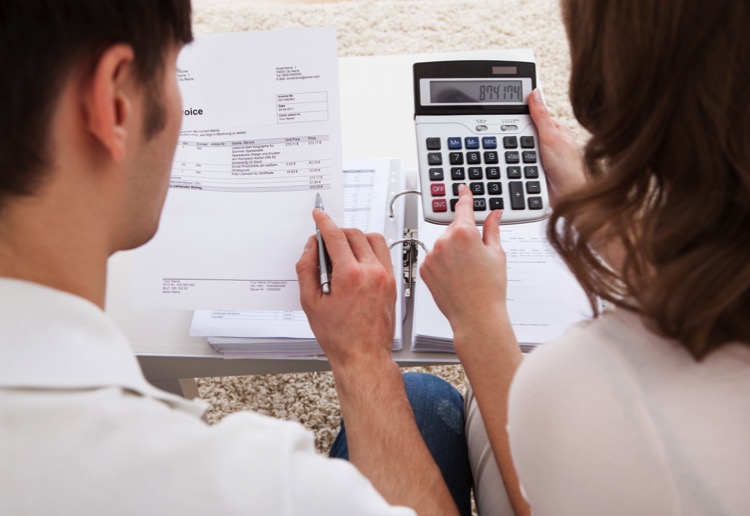Do you really understand what having kids is going to cost you in terms of finances?
Some of us may research and budget, some may have a fair idea and take it as it goes, and still others might have a very limited understanding of the impact children will have on your spending.
For the planners out there, cost may be a factor when it comes to timing. A 2013 report published by AMP gives an amount of $812,000 as the average cost of raising 2 children for a typical middle class family. Incredibly, the average cost for low income families is $474,000 and for high income families is $1,097,000.
It’s not surprising that it’s becoming more common for people to leave having children to later in life. According to a 2011 Australian Institute of Family Study, 43% of women with children were over 30 when they had their first child, a jump from 23% in 1991.
In the last few decades the way we raise our children has changed significantly. The societal expectations have risen greatly and are reflective in what our children ask for and understand as the norm. It seems like there is forever something new to pay for. More clothes, more outside school activities and more technology to name a few.
Here are some interesting facts and figures on raising children in Australia:
- Children between the ages of 18-24 who live at home, cost between 4 & 5 times as much as children under the age of 4 years old.
- Each subsequent child typically costs less. On average, the first child costs $284 per week, the second $232 per week and the third $193.
- Low income parents with 3 children on average spend 41% of their total income on children.
- Middle income parents with 3 children on average spend 29% of their total income on children.
- High income parents with 3 children on average spend 21% of their income on children.
- The largest differences in spending on children in different income groups is education, child care, health and food.
It’s important to note that all the figures provided are based on what parents actually spend on raising their children, not what they need to spend.
Some simple ways to spend less when you have kids:
Avoid first child craziness
The things we buy for child number 1, particularly when they are babies, can be impulsive and tied in to the excitement of welcoming them to your life. But your child doesn’t need a $2,000 bassinet that they will sleep in for 6 weeks before transitioning to a cot.
First children often have a change table, the best pram, a baby bath, their own towels and washers, a wardrobe of clothes larger than yours, and the list goes on. The 3rd gets changed on the bed, bathed in the normal bath and share the family linens.
Many parenting websites will help you sort out what you need, and what’s just icing on the cake if you can afford it.
Don’t buy new
Check out eBay, Gumtree and other sites where people sell their pre-loved goods. You can often find the things you need in very good condition at a fraction of the price to buy them new.
Think before signing up to activities
Remember, if you are having more than one child, you will need to multiply the number of activities and the cost of activities by the number of children. Given one years’ worth of piano lessons for one child equates to $3,500, this can be a big Ouch!
Remember your kids will get tired. Often their brains are tired from school and there’s nothing better than a play in the park. With lots of us working with kids in after school care, you may find they will have activities on offer as part of their program. For example, my primary aged child has done jiu-jitsu and soccer training this year.
They don’t always need up to date technology
A big cost for parents is phones, laptops, play stations and the list goes on. Your child doesn’t always need new, when a cared for phone and laptop can see them through the high school years.
Just because their friends have it, doesn’t mean they have to have it
Over the years, at school and elsewhere your kids will always come in to contact with kids who have less and kids who have more. The friend who gets $20 for the tuckshop every day can be stressful for the mum who sends her kid with a packed lunch to school every day.
Primary school is a great time to talk about these things and start shaping your kid’s money behaviours and values. By the time high school hits, it will be $50 a day at the tuckshop, and that can make a big dent in a budget.
Set a budget and stick to it
It’s okay to let your kids know that things cost money. It’s also okay for them to understand that if you say yes to something, that something else needs to be let go.
For example, a 2 activity rule where your child does netball and gymnastics. They want to do flute, fine, are they giving up netball or gymnastics? Not only is this a good thing for your budget, it teaches your child to prioritise what’s important to them.
The bottom line to budgeting for kids is to continually review and refine. What’s working, what’s costing (too much) and what can you do better.
How’s your budget going now that you’re a family rather than a couple? Share with us below.
Image source Shutterstock.























-

-
-
meedee said
- 19 Jan 2022
-

-
-
ella12 said
- 16 Nov 2016
-

-
-
mom101628 said
- 10 Nov 2016
-

-
-
mom134803 said
- 10 Nov 2016

-

-
-
mom70876 said
- 09 Nov 2016
-

-
-
mom19782016 said
- 11 Oct 2016
-

-
-
june11 said
- 07 Oct 2016
-

-
-
mom134803 said
- 03 Oct 2016

-

-
-
mom160421 said
- 02 Oct 2016
-

-
-
mom93821 said
- 02 Oct 2016
-

-
-
mom112217 said
- 02 Oct 2016
Post a comment10:26 am
3:17 pm
10:22 pm
3:55 am
11:17 pm
1:19 pm
12:22 pm
4:19 am
2:29 pm
1:11 pm
-

-
-
mom93821 replied
- 03 Oct 2016 , 5:52 am
Reply1:09 pm
To post a review/comment please join us or login so we can allocate your points.